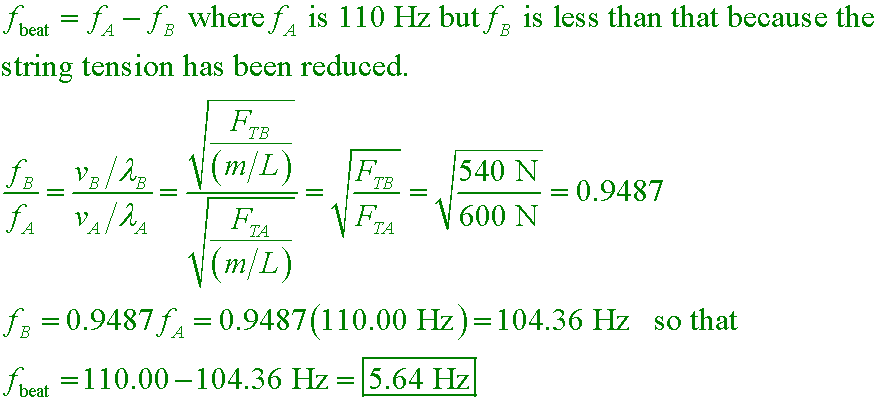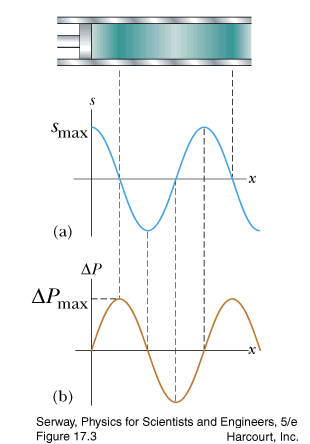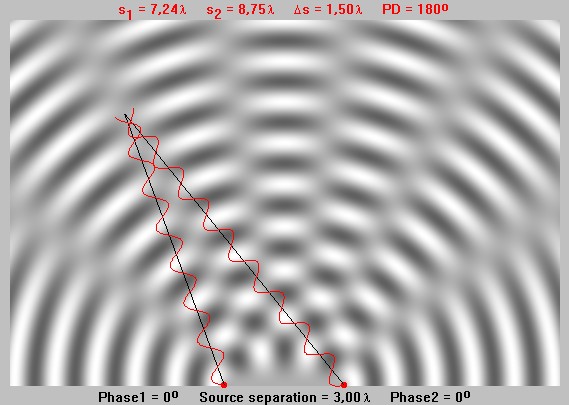Summary
- Wave properties
- Wave interference
- Standing waves
Walker4e
If you fill your lungs with SF6 gas, your voice sounds unnaturally low.
From this observation, we can conclude that the speed of sound in SF6 must be _____ the speed of sound
in air.
A. less than
B. greater than
C. equal to
Answer
PoP5 13.27
A dolphin in seawater at 25°C (v = 1533 m/s) emits a sound wave directed
toward the ocean floor 150 m below. How much time passes before it hears an echo?
A. 5.11 s
B. 2.56 s
C. 0.782 s
D. 0.196 s
Answer
pse6 17.4
The speed of sound in air (in m/s) depends on temperature according to:
v = 331.5 + 0.607TC
where TC is the Celsius temperature. In dry air the temperature
decreases by about 1°C for every 150 m rise in altitude. How much time will it
take sound from an airplane at 9000 m to reach the ground, taking the temperature
variation into account? The ground air temperature is 30°C.
A. 25.7 s
B. 26.5 s
C. 27.2 s
D. 38.1 s
Answer
PoP5 13.36
Calculate the pressure amplitude of a 2.00-kHz sound wave in air if the displacement amplitude is
2.00×10−8 m.
A. 0.020 Pa
B. 0.104 Pa
C. 0.314 Pa
D. 1.20 Pa
Answer
Walker5e EYU 14.7
Two in-phase sources emit waves with a wavelength of 2 m. An observer is a distance d1 = 2 m from one source and a distance d2 = 1 m from the other source. The observer detects _____ of the waves.
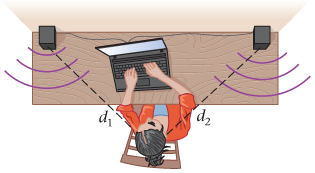
A. constructive interference
B. destructive interference
C. a mix of constructive and destructive interference
D. no interference
Answer
Walker5e 14.59
Two loudspeakers are placed at either end of a gymnasium, each pointing toward the center of the gym and equidistant from it. The speakers emit 266-Hz sound that is in phase. An observer at the center of the gym experiences constructive interference. How far toward either speaker must the observer walk to first experience destructive interference? The speed of sound is 343 m/s.

A. 0.322 m
B. 0.645 m
C. 1.29 m
D. 3.43 m
Answer
Walker5e 28.11
Moe, Larry, and Curly stand in a line with a spacing of 1.00 m. Larry is 3.00 m in front of a pair of stereo speakers 0.800 m apart. If the speakers vibrate in phase, what are the two lowest frequencies that allow Larry to hear a loud tone while Moe and Curly hear very little? The speed of sound is 343 m/s.
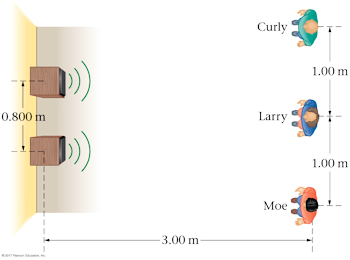
A. 226 Hz and 678 Hz
B. 339 Hz and 1017 Hz
C. 1085 Hz and 2170 Hz
D. 678 Hz and 2034 Hz
Answer
POP5 27.17
The walls of a riverside warehouse has two open doors and its walls are lined with sound-absorbing
material. Two people y = 20 m apart are L = 150 m from the doors. Person A can hear
λ = 3.00 m
sound waves from a boat horn loudly, but they are barely audible to person B. Assuming that person B
is at the position of the first minimum,
determine the distance d between the doors, center to center.
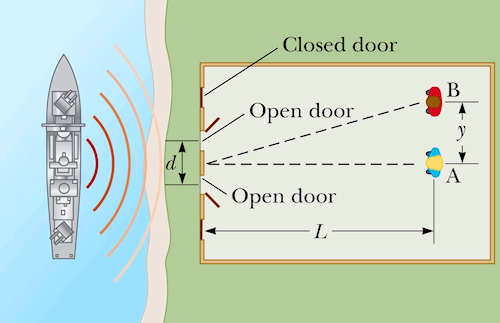
A. 11.3 m
B. 8.81 m
C. 7.50 m
D. 5.33 m
Answer
PoP5 14.45
Two identical piano strings are designed to vibrate at 110 Hz but one of them slips from its normal
tension of 600 N to a tension of 540 N. What beat frequency is now heard?
A. 1.1 Hz
B. 5.6 Hz
C. 7.7 Hz
D. 60 Hz
Answer
answer
A. less than
The sound of your voice is in part a result of standing waves that form
in your airways and sinus cavities. The sizes of those cavities determine the wavelengths of the standing
waves that form, and those wavelengths do not change when you replace air with SF6. Therefore,
if the frequency f = v/λ is reduced, the wave speed must also have
been reduced when air is replaced with SF6.
answer
D. 0.196 s

answer
C. 27.2 s
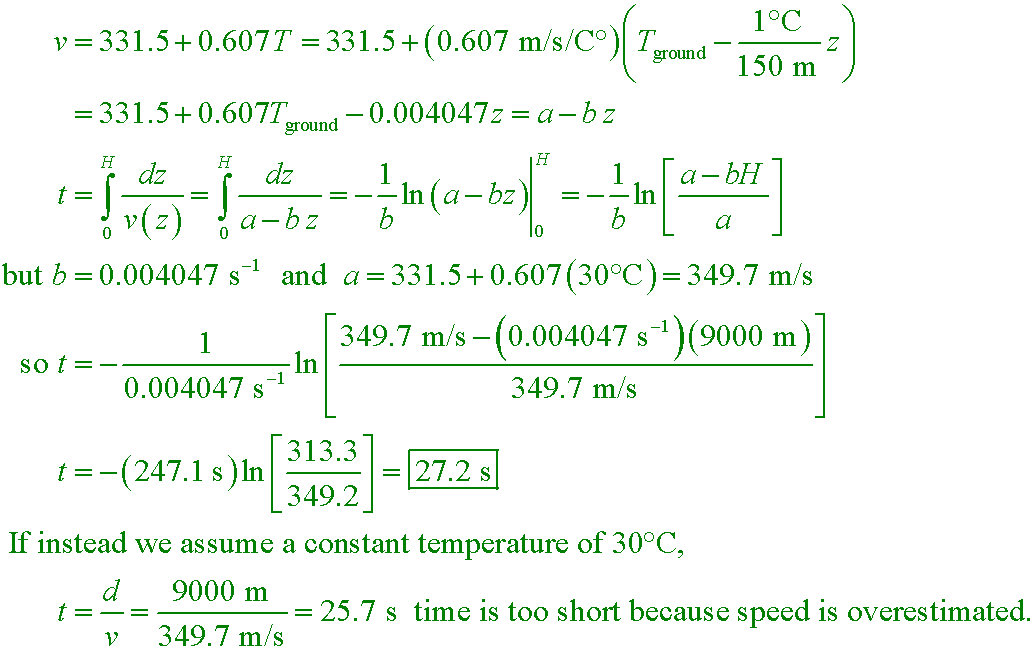
answer
B. 0.104 Pa

answer
B. destructive interference
The two sound waves have traveled paths that differ by 1 m, which is half a wavelength. That means the crest of one wave will overlap the trough of the other, and they will interfere destructively.
answer
A. 0.322 m

D. 678 Hz and 2034 Hz
We need to find the two lowest frequencies that produce destructive interference at the positions of Moe and Curly. Larry will always hear a loud sound (constructive interference) at his location no matter the frequency.
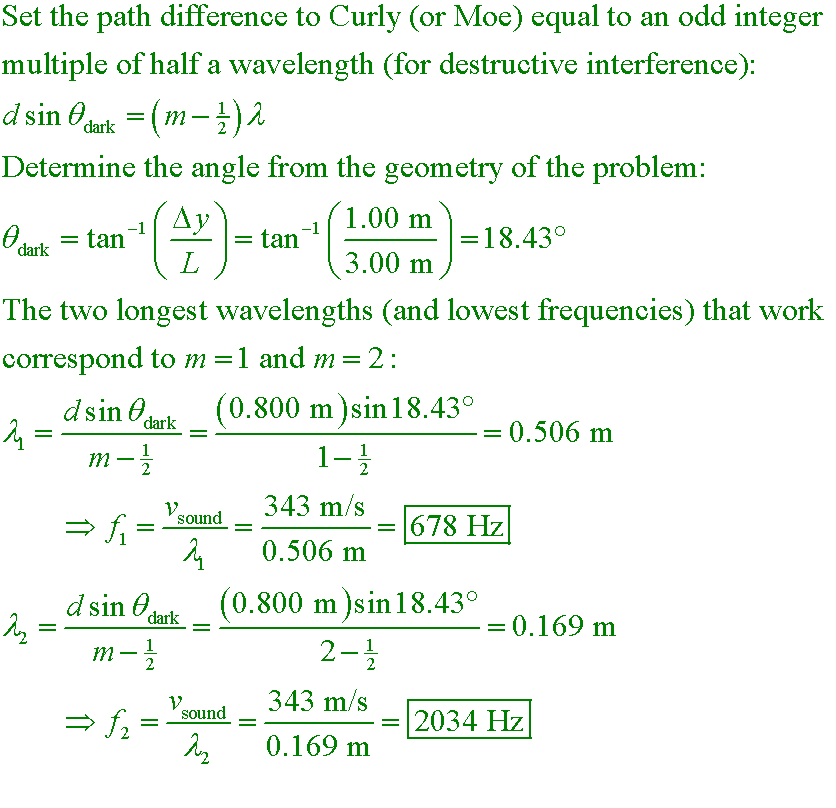
A. 11.3 m
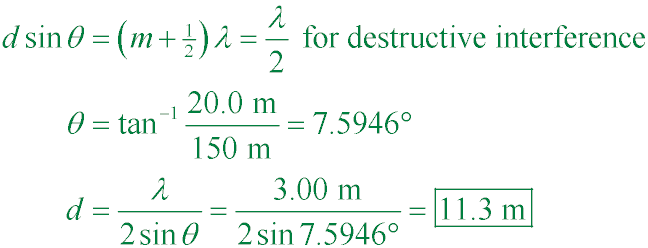
answer
B. 5.6 Hz
